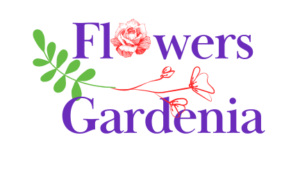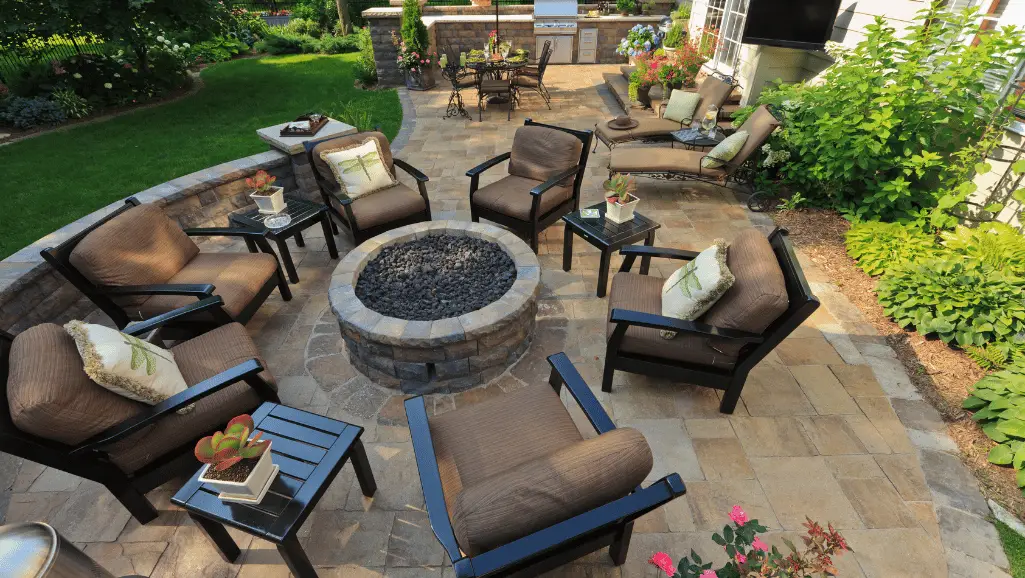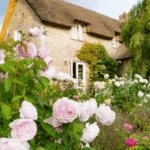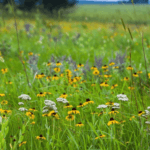
Beautiful flowers gardenia Plants For Your homes

Space Saving Garden in cities, the love for greenery grows stronger. A space saving garden is now a must-have, not just a luxury. It’s about turning small spots like balconies into lush havens. With innovative gardening solutions, even the smallest areas can become green spaces. These gardens use vertical gardening and raised beds to make the most of maximizing small outdoor spaces. They’re perfect for those who love urban gardening tips.
Raised beds are great for small spaces. They help control weeds and improve drainage, which is key in cities. These beds let you grow more plants in a small area. This way, you can get a lot of food and make your garden look good too.
Looking to make the most of your garden space? A smart garden design is key. It boosts both looks and use. By planning well, even small gardens can become beautiful and useful.
Start by looking at what your garden has to offer. Think about the space, sunlight, and soil quality. Knowing these things helps you plan a garden that meets your needs. For instance, Susan Morrison suggests scaling down big garden ideas for smaller spaces in her book The Less is More Garden.
Vertical gardening can change your garden. Use trellises or green walls to grow plants upwards. This is great for plants like beans and peas, which can grow together on one trellis, making more use of space.
Don’t give up on variety to save space. Place plants smartly to make the most of your garden. Arrange them by height, sunlight needs, and growth patterns. Using containers also helps arrange plants flexibly.
| Garden | Size (feet) | Design Feature | Functionality |
|---|---|---|---|
| Garden 1 | 32 x 22 | Bluestone path | Creates a sense of unfolding and gradual discovery |
| Garden 2 | Divided into two spaces | Multipurpose zones | Enhances perception of space and experiences |
| Garden 3 | 80 x 20 | Three divided areas with terracing and a redwood deck | Combats length-to-width ratio issue and adds intimate spaces |
| Garden 4 | Transformed space | Curved walls and diagonal lines | Creates inviting and visually interesting garden spaces |
By following these tips, you can use your garden space better and make it more fun and useful. Whether you try new styles or creative garden solutions, you can do a lot with a little space.
Vertical gardening is a great way to make the most of small outdoor spaces. It’s not just efficient but also adds beauty and boosts productivity. For those living in cities or with tiny gardens, this method lets you grow more plants without taking up more space.
Using items like trellises, wall planters, and repurposed pallets can turn a plain wall or small yard into a lush garden. Plants like cucumbers, tomatoes, and strawberries do well in vertical gardens. Rabeya Khanom’s blog Nature shows how using vertical spaces can improve well-being and gardening creativity.
Stackable planters are great for vertical gardens because they’re modular and easy to adjust and harvest from. Vertical hydroponic systems are also excellent for growing lettuce and herbs. They’re clean, efficient, and perfect for indoor gardens.
Succession planting is a key technique in vertical gardening. It means planting new seeds right after you harvest the first crop. This method works well with vertical gardens to keep the space productive.
Vertical gardens focus on tight spacing, letting more plants grow in a small area. This approach uses nutrients efficiently, reduces weeds, and makes gardening more rewarding. It ensures a sustainable, high yield from small spaces.
As vertical gardening becomes more popular, it remains a creative and eco-friendly way to garden in cities. It supports sustainable living and gives people access to fresh, organic food in unique garden designs.
Urban living has led to the need for compact garden solutions. These solutions turn small spaces into lush green areas. By using space wisely, like with multi-level gardening and diverse plants, city folks can enjoy nature.
Multi-level gardening is a great way to use small spaces. It uses vertical structures like tiered planters and stepped beds. This method makes the most of space and adds beauty and depth to small gardens.
Urban gardeners are now using vertical gardening. They grow herbs, succulents, and veggies on living walls. This method uses space well and adds a unique touch to small gardens.
For example, raised beds lift the garden up and improve soil and water care. This follows sustainable gardening practices. Smart irrigation systems in these beds help plants grow well without wasting water.
Pairing edibles with ornamentals is another smart garden idea. It uses space well and helps nature by attracting good insects. Mixing leafy greens with flowers like marigolds makes gardens pretty and useful.
Companion planting helps with pests and soil health. This makes gardens better for the environment. Container gardening is great for city living, fitting on balconies and rooftops. It lets people grow a variety of plants in small spaces.
Using eco-friendly containers is also a good idea. It helps reduce waste in city gardens.
Innovative garden solutions blend function and beauty. They help people rethink small spaces and improve city living. By applying landscape architecture to small gardens, people can enjoy gardening and a green lifestyle, even with limited space.
Urban gardening is more than a trend; it’s a way to bring green spaces to city life. With balcony garden ideas and smart design, even small spots can become useful and peaceful. Making a city oasis means blending beauty with practicality, using every inch wisely.
When gardening in small spaces, picking the right plants is key. Plants like ‘Mini Twists’ Eastern white pine and ‘Hameln’ dwarf fountain grass are great for their easy care and beauty all year. Adding Ivory Halo® Tatarian dogwood brings color and texture. Vertical gardens and modern planters can turn balconies into lively spots.
Good garden design makes the most of small spaces without losing beauty. Using corner seating and raised planters helps use space well and makes it easy to reach. Adding rockeries and ponds not only looks good but also brings in wildlife, making city areas more alive.
Dealing with city gardening problems like privacy or space for guests can be fun. For example, Christie Dustman’s East Coast garden uses raised planters and smart design to make a space that looks great all year and serves many purposes.
| Feature | East Coast Garden (1,800 sq ft) | West Coast Garden (2,200 sq ft) |
|---|---|---|
| Design Theme | Private oasis with stone elements | Open, meandering space with modern walkways |
| Main Challenge | Lack of entertainment space | Uneven hardscaping |
| Key Solution | Elevated planting areas, roof-deck | Zigzag concrete walkway for depth illusion |
| Planting Zone | Zone 6 | Zone 8 |
This comparison shows how compact gardens can solve different urban problems and meet various tastes. It proves the flexibility and adaptability of gardening in city spaces.
As urban living spaces get smaller, new garden ideas become key for garden lovers. Using efficient layouts and vertical gardens not only saves space but also makes small areas look and work better. Strategies like using a garden trellis and container gardening tips help create a lush garden in small spots.
Every inch of your garden counts in the city. A DIY garden trellis is great for supporting plants like cucumbers and roses. It turns a simple fence or wall into a lively spot. These trellises help plants grow and add beauty. For DIY fans, making a trellis from old bike frames or wood can make your garden stand out.
Container gardening lets you grow many plants in small spaces. Containers are flexible, letting you control soil quality and move plants for better sun. But, picking the right container is key for good drainage and plant growth. Containers are flexible but need careful watering and nutrients since plants can get stressed without enough roots.
For more tips on creative gardening, check out Flowers Gardenia. They offer great advice for both new and seasoned gardeners.
| Vertical Gardening Solution | Details | Plant Types |
|---|---|---|
| Composting Vertical Planter | Accommodates up to 50 plants in a 4 sq ft area | Lettuce, Radishes, Spinach |
| Wall Planters with Self-Watering | Multiple pockets, suitable for indoor/outdoor use | Nasturtiums, Cherry Tomatoes |
| Stackable Planters | Multiple planting spots in stackable trays | Strawberries, Flowers |
| Vertical Garden Beds | Stacked on a stand, some with drip irrigation | Cucumbers, Squash, Flowers |
Using vertical garden ideas and trellises can change small spaces into beautiful gardens. With container gardening tips, you can have a garden that’s both useful and lovely, even with limited space.
Turning a small outdoor area into a beautiful space needs a smart efficient garden layout and creative garden design. Ideas like adding a greenhouse or vertical gardens can make small spaces feel big and useful.
Key to compact garden designs is using space wisely with multi-use features and furniture. Using light materials like aluminum and wicker is smart. They’re easy to move and don’t get damaged by the weather.
| Feature | Impact on Small Patio |
|---|---|
| Outdoor Rug and Coffee Table | Creates separation, makes the patio feel larger |
| Decorative Lighting | Enhances ambiance, expands usability into the evening |
| Vibrant Plants | Increases perceived space, adds brightness |
| Built-in Seating | Saves floor space, offers integrated aesthetics |
| Fire Pit | Acts as focal point, extends usability year-round |
Vertical gardening is great for small spaces. It uses plants that grow up, perfect for areas with little ground space. This method combines greenery with city life, making buildings look softer and more beautiful.
Color is very important in garden design. Bright colors and patterns make areas stand out and tell stories. These designs make small patios look bigger and more interesting.
Companies like Treesdale Landscaping are making small areas look amazing with creative garden design and efficient garden layout. They use tall plants and smart plant placement to make spaces look bigger.
Whether it’s a small balcony or backyard, adding beauty and function to your garden can change how you see and use outdoor space.
Modern urban living often limits the space for traditional gardening. Yet, balcony garden ideas and patio gardens offer a smart solution. These gardens add greenery to high-rise apartments and urban homes. They also improve life quality by bringing nature closer to city folks.
For a successful balcony garden, understand your space’s unique climate. Know the best spots for light, wind, and shade. Using container gardening techniques helps plants thrive. Choose plants that fit your balcony’s conditions well.
Mediterranean herbs are great for sunny, dry spots. They’re perfect for balconies with lots of sunlight.
Picking the right containers is key for balcony gardening. Containers like the Easy-hang Trio Planter and Vigoroot Pots are great. They have built-in drainage and save space, perfect for city living. Self-watering planters also cut down on upkeep and keep plants moist, even in changing weather.
| Plant Type | Ideal Container | Benefits |
|---|---|---|
| Small vegetables (e.g., radishes, lettuces) | Grow Table | Compact, allows for tight spacing, easy harvest |
| Flowering plants | VegTrug Raised Bed Planter | Decorative, adds aesthetic value, perfect height for easy maintenance |
| Herbs and spices | Vigoroot Pots | Promotes healthy root growth, air-prunes roots naturally |
| Tomatoes | Tomato Success Kit | Supports four plants per square meter, includes support structure |
| Microgreens | Easy-hang Trio Planter | Utilizes vertical space, easy to set up and manage |
| Exotic flowers | Elho Light Garden | Integrated lighting, ideal for balconies with low natural light |
Balcony gardening tips go beyond picking plants and containers. Using space wisely, like vertical gardening and railing planters, increases your planting area. This makes your balcony look better and uses space well.
For more ideas on making the most of your small garden, check out this resource on balcony and patio garden designs.
Indoor gardening turns small spaces into lush, green havens. It’s key to innovative gardening, letting you grow plants all year, no matter the season. Plants make your home look better and help you live happier and healthier.
When picking plants for indoor gardening, think about their light and space needs. Leafy greens, herbs, and some ornamentals do well inside. Most plants need 6-8 hours of light daily, best near a south-facing window.
Picking the right plants is crucial for indoor gardening success. Herbs like basil and mint, veggies like carrots and radishes, and decorative plants need different amounts of sunlight and space. Make sure to consider their growth habits and space needs for your indoor spot.
Get enough light for your plants using natural or extra light if needed. Keep the temperature and moisture right, between 60 – 75 degrees Fahrenheit, for plant health. Fertilize as needed, from every two weeks to once a quarter. Using urban gardening tips in your care routine helps overcome challenges like limited light or space.
| Plant | Light Requirement | Container Depth | Growth Time |
|---|---|---|---|
| Carrots | 4-5 hours | 12 inches | 50-80 days |
| Radishes | 6-8 hours | 2-4 inches | 30-45 days |
| Scallions | 5-6 hours | Water | Continuous harvest |
| Garlic Greens | 4-6 hours | 4-6 inches | 14-21 days |
| Lettuce | 6-8 hours | 2-4 inches | 30-60 days |
Know your climate’s hardiness zone and your indoor conditions to pick the best plants and planting times. For more tips and reviews on indoor garden systems, check out this resource.
Indoor gardening not only beautifies your home but also gives you fresh produce. With the right setup, some knowledge, and regular care, indoor gardens are rewarding. They make any urban space more lively.
When you’re working with maximizing small outdoor spaces, getting the most out of water and nutrients is key. Using efficient garden layouts helps use space well and makes your garden more sustainable and productive. It’s important to use new watering systems and practices that give plants what they need without wasting anything.
Using self-watering containers and drip irrigation is a smart way to save water and make sure plants stay moist. These are great for container gardening because they let you control how much water and nutrients plants get. Mulching also helps by stopping water from evaporating too quickly and keeping the soil moist.
Getting nutrients to your plants right is also key for their growth. Adding organic compost and using fertilizers wisely helps plants grow strong without taking up a lot of space.
| Watering Technique | Benefits |
|---|---|
| Soaker Hoses | Reduces water use by up to 50% compared to conventional methods |
| Drip Irrigation | Targeted watering, minimizing runoff and evaporation |
| Mulching | Preserves moisture and prevents weed growth |
The table above shows how to make the most of maximizing small outdoor spaces with smart watering methods. For those into efficient garden layouts and container gardening tips, these tips are a must.
Using these methods will boost your garden’s productivity and help you garden in a way that’s good for the planet. Remember, the secret to great gardening in small spaces is using resources wisely.
Container gardening is a great way for people with little space to grow their own food. It lets you grow many vegetables, like tomatoes and potatoes, in a small area. This method gives you control over the environment, which is key for growing a lot of food.
For those looking for creative ways to use their space, container gardening is perfect. It looks good and helps you use your space well. This is especially useful for city folks, who make up over 80% of the U.S. population, and have small balconies or patios.
Choosing the right soil and fertilizer is crucial in container gardening. Many urban gardeners find commercial potting mixes lacking, so they make their own. A good mix includes potting soil, compost, peat moss, perlite, and Plant-tone. This mix ensures the soil drains well, which is important since containers dry out quickly.
Using the right fertilizer is also key. A balanced, water-soluble fertilizer helps replace nutrients that containers lose fast. This keeps plants healthy and productive throughout their growth.
Keeping an eye out for pests and diseases is important in container gardening. Regular checks for problems and using natural pest control are good practices. Choosing plants that resist diseases also helps keep your garden healthy.
By choosing the right soil, fertilizer, and pest control, gardeners can greatly improve their container gardening. This leads to beautiful and productive gardens, even with limited space.
The shift to space saving gardens is more than a trend. It’s a key change in urban garden design that makes the most of small spaces. Studies show a 40% increase in garden productivity with smart design. Vertical gardening can even boost yields by 50% over traditional methods.
Science Direct agrees, showing more produce per square foot with vertical gardening. The Old Farmer’s Almanac suggests this method can quadruple planting space.
In urban areas, these creative gardens help people connect with nature. Marigolds are great for small gardens, making them look good and keeping pests away from veggies. Combining hydroponics and aquaponics shows how new ideas are changing urban farming.
This mix of plants and practicality is not just about looks. It’s a step towards sustainable buildings and eco-friendly living.
By creating these small gardens, we improve our lives and help the planet. The space saving garden movement leads us to a future where every inch counts. Every garden action, big or small, adds to a greener world.
These gardens don’t just make our spaces look better. They teach us about using resources wisely and being resilient. So, it’s crucial for city folks, architects, and planners to keep adding green spaces to cities. This benefits our communities and the environment greatly.




